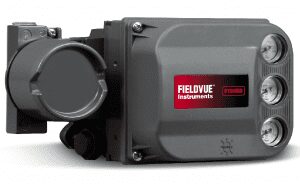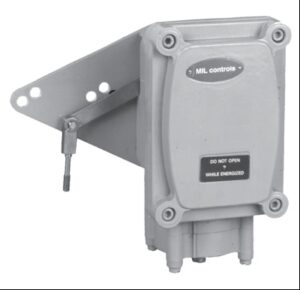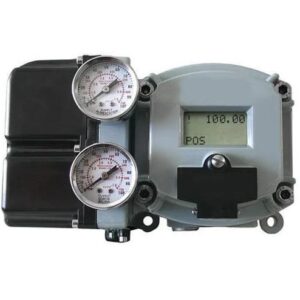Table of Contents
A control valve positioner is an essential part of a control valve system that is used to adjust and control the position of the valve in order to regulate the flow of fluids through a process. This article will provide a detailed overview of control valve positioners, including their definition, types, applications, advantages, and disadvantages.
What is a Control Valve Positioner?
A control valve positioner is a device that is used to adjust the position of a control valve in order to regulate the flow of fluid through a process. It is typically attached to the actuator of the control valve and receives a signal from the controller that determines the required position of the valve. The positioner then adjusts the position of the valve accordingly to achieve the desired flow rate.

How a positioner works in a control valve
Control Signal
The process controller sends a control signal to the positioner, which is proportional to the desired valve position.
Feedback Signal
The positioner receives feedback from the valve position sensor and compares it with the control signal.
Adjusts Valve Position
If the valve is not in the desired position, the positioner will adjust the valve position by increasing or decreasing the pneumatic signal to the actuator.
Continuously Monitor
The positioner continuously monitors the valve position and adjusts the actuator to maintain the desired position.
Types of Control Valve Positioners:
Control valve positioners are devices used in the control of process valves, which adjust the position of the valve to regulate the flow of fluid through a pipeline. There are various types of control valve positioners available, including:
Pneumatic Positioners
These positioners use compressed air to control the position of the valve. The pneumatic signal generated by the controller is converted into a mechanical force, which moves the valve to the desired position.





Electro-Pneumatic Positioners
These positioners use a combination of electronic and pneumatic signals to control the valve position. The controller sends an electronic signal to the positioner, which then converts it into a pneumatic signal to move the valve.





Digital Positioners
These positioners use digital technology to control the valve position. They can be programmed to perform complex functions and are highly accurate.





Smart Positioners
These positioners have built-in microprocessors that can communicate with other devices in the control system. They can provide diagnostic information and perform self-calibration.





Mechanical Positioners
These positioners use mechanical linkages to control the valve position. They are simple and reliable but not as accurate as other types of positioners.
Hydraulic Positioners
These positioners use hydraulic fluid to control the valve position. They are often used in applications where high force is required to move the valve.
The choice of positioner depends on the specific application and requirements of the control system.
Applications of Control Valve Positioners:
Control valve positioners are used in a wide range of industries and applications. They are commonly used in process industries such as chemical, petrochemical, and oil and gas, where precise control of fluid flow is essential for maintaining product quality and safety. They are also used in power plants, water treatment facilities, and other industrial applications where control of fluid flow is critical.
Advantages of Control Valve Positioners:
The main advantage of control valve positioners is their ability to provide precise control of fluid flow. By adjusting the position of the valve to match the required flow rate, they can help to maintain product quality and safety, reduce energy consumption, and minimize waste. They can also help to extend the lifespan of control valves by reducing wear and tear on the valve components.
Disadvantages of Control Valve Positioners:
One potential disadvantage of control valve positioners is their cost. Electro-pneumatic positioners can be quite expensive, especially when compared to pneumatic positioners. In addition, control valve positioners can add complexity to a control valve system, which may require additional maintenance and support.
Installation and Maintenance of Control Valve Positioners:
Proper installation and maintenance of control valve positioners is essential for ensuring their continued performance and reliability. During installation, it is important to ensure that the positioner is correctly mounted and aligned with the control valve actuator. It is also important to ensure that the air supply to the positioner is clean and dry, in order to prevent damage to the positioner components.
Regular maintenance of control valve positioners typically involves cleaning and inspecting the positioner components, as well as checking the calibration and adjustment of the positioner. In addition, it may be necessary to replace worn or damaged components, such as O-rings or gaskets.
Conclusion
Control valve positioners are an essential part of many control valve systems, providing precise control of fluid flow in a wide range of industrial applications. While they may have some disadvantages, such as cost and complexity, their benefits in terms of improved product quality, energy efficiency, and reduced waste make them a valuable investment for many industries. Proper installation and maintenance of control valve positioners is essential for ensuring their continued performance and reliability.
Read Also